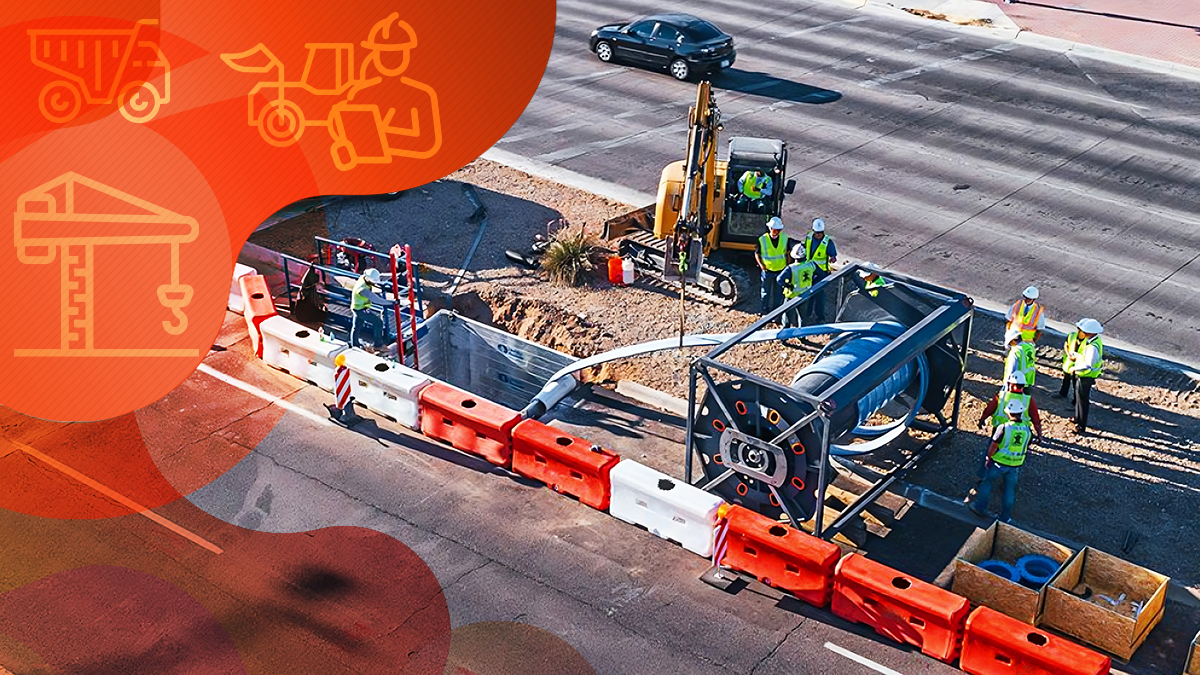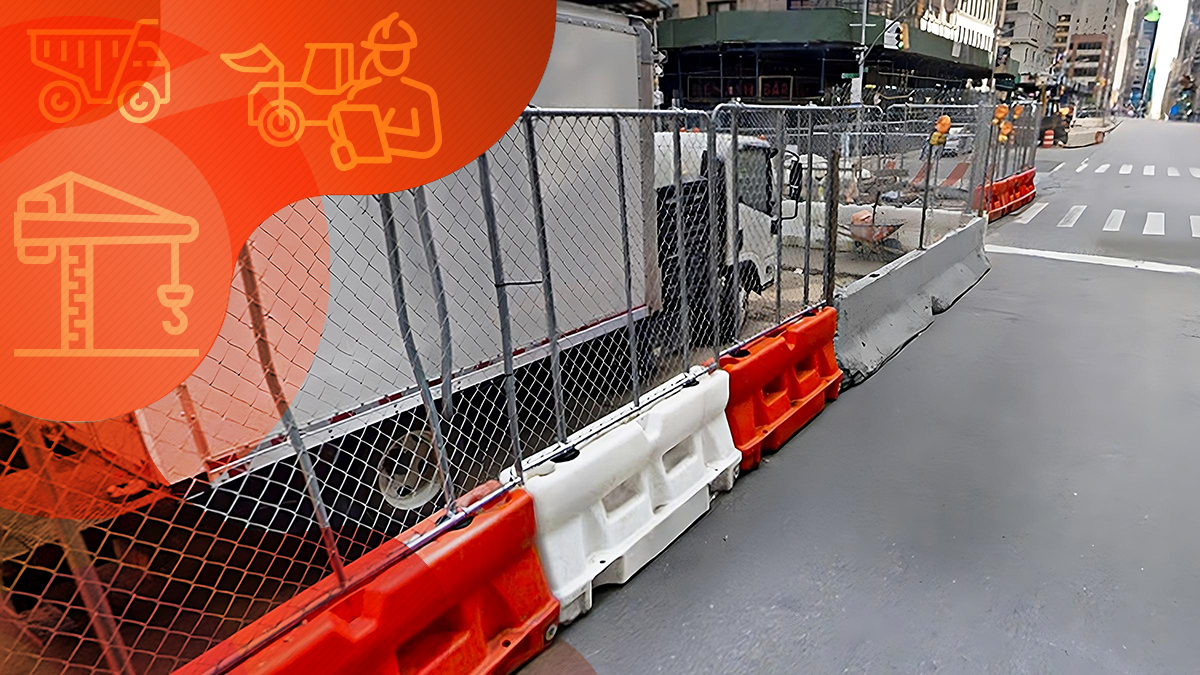Expert Tips on Work Zone Traffic Safety
Boost your work zone safety with our expert tips! Learn how to optimize taper lengths, signage, buffer zones, and more to protect workers and drivers.

The Safety Standards for Signs, Signals, and Barricades, as required by the Occupational Safety and Health Administration (OSHA), offers extensively detailed guidance on best practice for traffic signs and safety in work zones.
This is essential information that doesn’t just keep crews, equipment, materials, and drivers safer, but also keeps you in compliance.
But beyond the standard, here are some tips on taking your safety precautions up to the highest possible level.
1. Maximize Work Zone Safety with Extended Taper Lengths
A merging taper is essentially a gradual transition area where vehicles merge from one lane into another. It provides drivers with the time and space needed to adjust their speed and position safely.
Contractors often adhere closely to the maximum recommended taper length during these merging scenarios, recognizing the importance of ample space for smooth transitions.
However, when traffic doesn’t need to merge, it’s tempting to stay close to the minimum. Even in situations where lanes are simply shifting, maintaining a longer taper is advisable. This extended length allows for smoother traffic flow and reduces the risk of sudden lane changes or accidents.
Cutting corners in traffic safety can be deadly. Investing in the extra time and equipment required for longer tapers is a small price to pay compared to the potential consequences of preventable accidents.
2. Utilize Taper Zone Signs
To enhance work zone safety, utilizing taper zone signs is essential. These signs, typically large and flashing, serve as effective complements to traditional traffic control measures like drums and cones.
By strategically placing these signs with arrows indicating the direction of vehicle delineation, drivers are provided with clear guidance, reducing the likelihood of confusion or accidents.
If the work area is in flux, a truck-mounted attenuator can be an especially good choice. That way, you can reposition the signage quickly and easily to where it’s needed most.
Consider rush hour traffic dynamics as well. For instance, during the morning commute, prioritizing additional signage for westbound traffic may be prudent. As the day progresses and traffic patterns shift, reallocating signage towards eastbound lanes can better address changing needs.
By aligning signage placement with traffic demands, work zone safety can be maximized, mitigating risks for both workers and motorists.
3. Try Not to Take Advantage of Buffer Zones Being “Optional”
It can be tempting to forgo the buffer zone between the road and the work activity. Since it’s optional in many cases — and best practice says not to use buffer zones for storage of any kind — some think it’s more often unnecessary than necessary.
Our recommendation is to rethink buffer zones as optional. Instead of seeing them as optional, it's better to consider them necessary most of the time, with only a few exceptions. Why?
Because they help keep everyone safe. Buffer zones create space between vehicles and work areas, which lowers the chances of accidents and injuries for both workers and drivers.
Sure, sometimes buffer zones are unfeasible. Traffic could very well be moving slowly enough to make them downright unnecessary. For example, if traffic is already moving slowly, it might seem like there's no need for a buffer zone. But it's important to treat these situations as rare, rather than the norm.


4. Read “No More Than” As “Much Less Than”
When channelizer products need to be “no more than X number of feet,” make sure they’re markedly below that minimum requirement.
Having cones, delineators, and drums spaced more closely together greatly reduces the risk of drivers missing them.
Have you ever seen a careless driver thread two channelizer drums spaced too far apart? Let’s just say you absolutely never want to.
Ideally, you want a drum to either bounce off a windshield or bump beneath a car, prompting the driver to hit the brakes immediately. This ensures that drivers are alerted to the presence of hazards and can react swiftly to avoid accidents.
5. Every Driver Should Have “More Than Enough” Advance Warning
Advance warning areas are critical for ensuring driver safety in work zones. These areas provide essential information without overwhelming drivers.
Typically, a series of signs must be strategically placed: the first sign alerts drivers to upcoming construction, the second indicates which lane will be closed, and the third advises drivers to reduce their speed. This sequential approach helps drivers anticipate changes and adjust their behavior accordingly.
Workers with handheld signage or flags — as well as vehicular attenuators — can reinforce instructions and direct traffic.
Equipping workers with personal protective equipment (PPE), such as high-visibility vests and hard hats, further minimizes the risk of accidents and injuries. These items increase workers' visibility, making them more noticeable to drivers, even over long distances, protecting their lives and providing drivers with an advanced warning.
6. Optimize Work Zone Safety Signage
While we’re on the subject of effective signage, your site’s safety can be optimized in a few unique ways. The easiest is by consolidating all standard safety messaging into one clean, unmissable fence screen with all the symbols and messages presented together.
Effective safety signage needs to be clear, visible, and easy to understand. It should convey information quickly and directly, using simple language and recognizable symbols.
A collage of tin ads is hard to look at. They’re also difficult to keep track of and set up every time there’s a new project. A custom fence screen works as a banner, is easily rolled up and stored when you don’t need it, and lasts for years of constant outdoor use.
At SONCO, we offer custom signage options specific to your site and needs, including bilingual messaging. You can get a single fence screen to replace all other safety signage and still be OSHA compliant.
7. Planning for Work Zone Safety: Sketching and Simulation Tools
It’s always a good idea to sketch the road and all the equipment needed based on the typical application. Another good strategy is printing out the map of the roadway, and you can print multiple copies to allow for mistakes without needing to sketch the road from scratch.
But it also may be worth investing in modeling and simulation tools. That investment includes both the cost of the software and the time to familiarize yourself with it. These not only cut down on time in the long run, they encourage ongoing optimization.
Striving for Excellence in Work Zone Safety
The goal should always be to cover all your bases to the extent that your precautions are beyond question. While it’s possible to go overboard with safety equipment, it’s never a bad idea to tweak the approach to be at least 25 percent over every minimum requirement.
Otherwise, you could find yourself looking back and wondering what you could have done differently.
At the end of the day, going above the minimum requirements puts you in the best position in terms of health, safety, and legality. If anything goes wrong beyond that, you can point to the safety guidelines as the problem, not your project management.
We’ve created a complete guide for you to learn more about the essential traffic safety equipment you must deploy in each situation to avoid accidents and be compliant.
Trend now

Reducing Impact Damage with Water-Filled Plastic Jersey Barriers
Understanding the effects of barrier materials on vehicles and their occupants can help improve road safety.

Choosing Between Concrete or Plastic Jersey Barriers
Not all barriers are built the same. Here’s what to know before choosing between plastic and concrete.

Advantages of Water Barriers with Fence Toppers
Learn how a fence topper transforms water barriers into a more secure, private, and effective work site solution.

